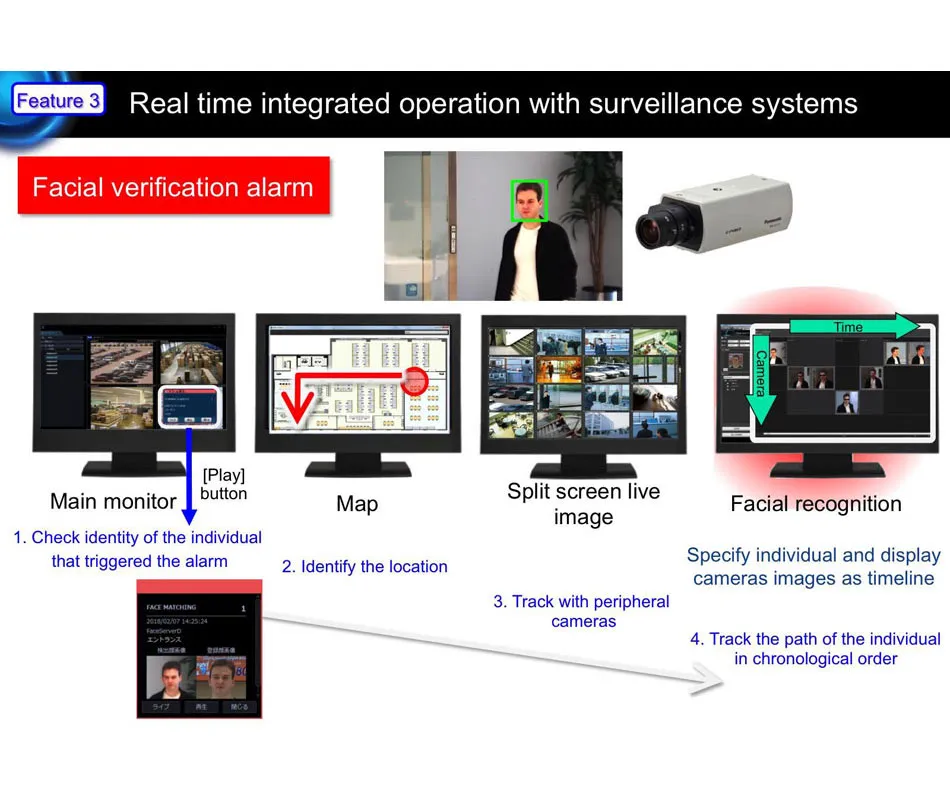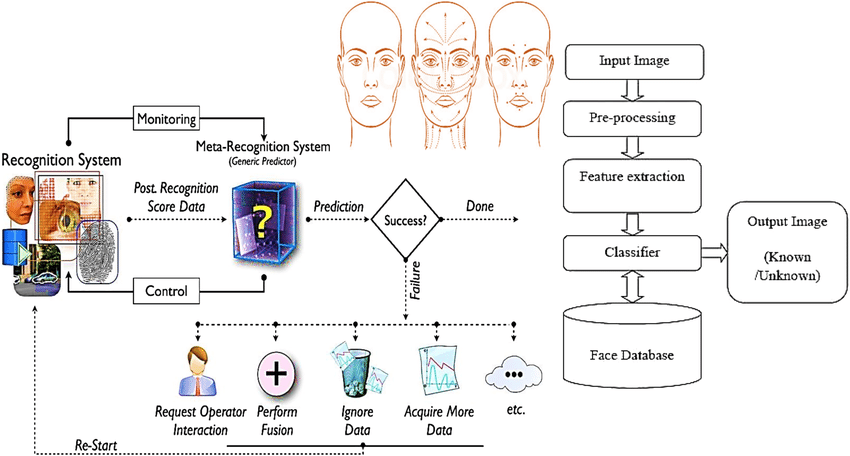What are Face Recognition Tools?

Face Recognition Tools are software applications that use artificial intelligence and computer vision techniques to identify and verify human faces from images or videos. These tools analyze facial features and patterns to create a unique facial signature for each individual, enabling accurate face recognition and authentication.
Top 10 use cases of Face Recognition Tools:
- Security and Surveillance: Face recognition tools are used in security systems for access control and surveillance.
- Biometric Authentication: Face recognition is used for biometric authentication in smartphones and other devices.
- Attendance Management: Face recognition tools automate attendance tracking in schools and workplaces.
- Law Enforcement: Face recognition aids law enforcement agencies in identifying suspects and missing persons.
- Customer Experience: Retailers use face recognition to enhance customer experience and personalize services.
- Emotion Analysis: Face recognition can analyze facial expressions for emotion detection in market research and psychology.
- Visitor Management: Face recognition is used in visitor management systems for access control in offices and events.
- Healthcare: Face recognition assists in patient identification and medical record management.
- Social Media Tagging: Face recognition tools automatically tag individuals in photos on social media platforms.
- Smart Cities: Face recognition is used in smart city projects for various applications, such as traffic management and public safety.
What are the feature of Face Recognition Tools?

- Face Detection: Face recognition tools can accurately detect and locate faces in images or videos.
- Face Verification: Tools can verify the identity of a person by matching their face against a database.
- Face Identification: Tools can identify individuals from a large database of faces.
- Emotion Recognition: Some tools can analyze facial expressions to detect emotions.
How Face Recognition Tools Work and Architecture?

The architecture of Face Recognition Tools typically involves the following stages:
- Face Detection: The tool uses computer vision algorithms to detect and locate faces in an image or video.
- Feature Extraction: The tool extracts facial features, such as eyes, nose, and mouth, to create a unique facial signature.
- Face Encoding: The facial signature is encoded into a mathematical representation or vector.
- Face Matching: The encoded facial signature is compared with a database of known faces using similarity metrics.
- Identification or Verification: Based on the match results, the tool can perform face identification or verification.
How to Install Face Recognition Tools?
The installation process for face recognition tools depends on the specific tool or library used. Some popular face recognition libraries include:
- OpenCV: A popular computer vision library that provides face recognition capabilities.
pip install opencv-python- dlib: A C++ library with Python bindings for face detection and recognition.
pip install dlib- face_recognition: A Python library built on top of dlib for face recognition.
pip install face_recognition- face-api.js: A JavaScript face recognition library for browser-based applications.
npm install face-api.jsCode language: CSS (css)Please note that face recognition tools may have dependencies or require additional setup, such as pre-trained models or libraries in specific environments. Always refer to the official documentation and tutorials provided by the specific tool or library for detailed installation instructions and best practices.
Basic Tutorials of Face Recognition Tools: Getting Started
Creating a comprehensive step-by-step tutorial for face recognition tools can be quite extensive due to the variety of available tools and their specific implementations. However, I can provide a basic guide for building a simple face recognition system using the face_recognition library in Python.

Step-by-Step Basic Tutorial for Face Recognition using face_recognition Library:
- Install Required Libraries:
- Using pip, Install the face recognition library:
pip install face_recognition
2. Prepare Image Data:
- Organize your face image data into separate folders for known individuals. Each folder should contain images of one person only.
3. Import Libraries:
- Create a Python script (e.g.,
face_recognition.py) and import the necessary libraries:python import face_recognition import os
4. Load Known Faces:
- Load known faces from the image data folders and create face encodings for each face:
known_faces = [] known_names = [] for person_folder in os.listdir("path/to/known_faces_folder"): for image_file in os.listdir(os.path.join("path/to/known_faces_folder", person_folder)): image = face_recognition.load_image_file(os.path.join("path/to/known_faces_folder", person_folder, image_file)) face_encoding = face_recognition.face_encodings(image)[0] known_faces.append(face_encoding) known_names.append(person_folder)
5. Load Unknown Faces:
- Load an unknown face image that you want to recognize:
python unknown_image = face_recognition.load_image_file("path/to/unknown_image.jpg")
6. Recognize Faces:
- Process the unknown face image to find any known faces in it:
python face_locations = face_recognition.face_locations(unknown_image) face_encodings = face_recognition.face_encodings(unknown_image, face_locations)
7. Compare Faces:
- Compare the unknown face encodings with the known face encodings to identify known individuals:
for face_encoding in face_encodings: matches = face_recognition.compare_faces(known_faces, face_encoding) name = "Unknown" if True in matches: first_match_index = matches.index(True) name = known_names[first_match_index] print("Face recognized as:", name)</code></pre></li>
8. Run the Face Recognition Script:
- Run the Python script, and it will process the unknown face image and output the recognized name(s).
Please note that this tutorial provides a basic introduction to using the face_recognition library for face recognition. For more advanced features, such as face detection from video streams or facial landmarks detection, refer to the documentation and tutorials of the face_recognition library or other face recognition tools you choose. Additionally, for production-level systems, consider optimizing the performance and handling various scenarios to ensure accurate and efficient face recognition.

👤 About the Author
Ashwani is passionate about DevOps, DevSecOps, SRE, MLOps, and AiOps, with a strong drive to simplify and scale modern IT operations. Through continuous learning and sharing, Ashwani helps organizations and engineers adopt best practices for automation, security, reliability, and AI-driven operations.
🌐 Connect & Follow:
- Website: WizBrand.com
- Facebook: facebook.com/DevOpsSchool
- X (Twitter): x.com/DevOpsSchools
- LinkedIn: linkedin.com/company/devopsschool
- YouTube: youtube.com/@TheDevOpsSchool
- Instagram: instagram.com/devopsschool
- Quora: devopsschool.quora.com
- Email– contact@devopsschool.com

